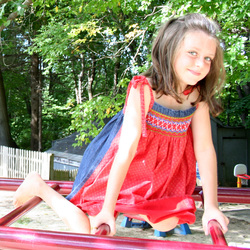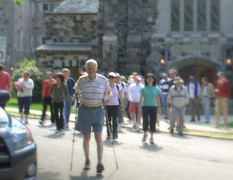Do you have a close friend? Someone you can talk to about the good and bad parts of your life? Is life better if you have close friends?
Good questions, don’t you think?
Lots of us move around. It seems about 75 percent of Americans pull up roots and move every five years or so.
Someone told me recently that people often move to Scarsdale when they have young children because the schools are so good and then, they move away when the kids graduate because the taxes are so high. That means a lot of us are facing transitions.
When we load up the moving truck, we don’t get to pack our friends and take them along. No, we have to say goodbye and start over in our new community. There are lots of good ways to stay in touch, especially with today’s technological advances, but the reality is, we say goodbye and things change.
Recent studies show the numbers of Americans who admit they do NOT have someone close enough to talk to about important things is increasing. We are getting more isolated socially when it comes to friendships and confidants.
Is it worth trying to make new friends and stay in touch with old friends?
I’ll give it to you straight—the answer is a resounding YES.
Social scientists say friendship produces these attractive benefits:
- Healthier brains
- Longer life
- Faster recovery from illness
- Lower stress levels
- Slower aging process
- Fewer colds
- Improved mental and emotional wellbeing
--When I’m with my best friend, we usually end up laughing together until our sides hurt.
--My best friend has forgiven me for something I did to him, and we have an even deeper connection now.
--I don’t like going to the doctor alone for my cancer treatments, but when my friend comes along, it isn’t as scary.
-- My best friend doesn’t live near me, but we know each other always, no matter when the last time we were together.
--I know my friend is going to be there for me, no matter how bad my day was…and I can trust them with that bad day.
I’ve been married to my best friend for 7 years. Sure, we have lots of things we disagree on, but life is full because we have each other.
Studies are pretty clear that, whether you are a man or a woman, young or old, having at least one close friend will improve your life in more than one way.
I found one study, done by the University of Virginia especially intriguing. The researchers brought subjects to the base of a hill, had the subjects look up at the hill and estimate how steep the hill was. The research project compared people who stood alone at the hill to people who stood with one of their friends at the hill. Guess what? People who stood looking up at a steep hill with a friend perceived the hill to be less steep. Fascinating results!
To me, this research indicates that with friends, we can better face the hills in our lives.
Today, I’m grateful for friends!










 RSS Feed
RSS Feed